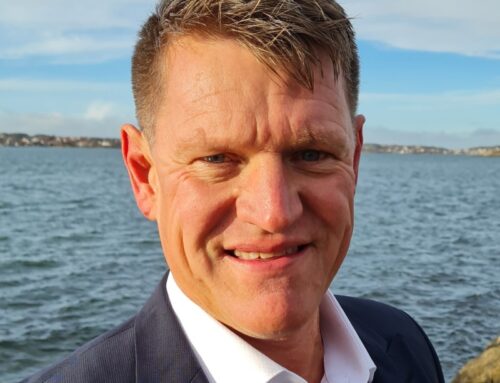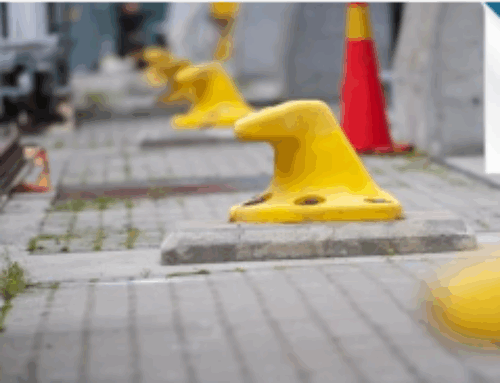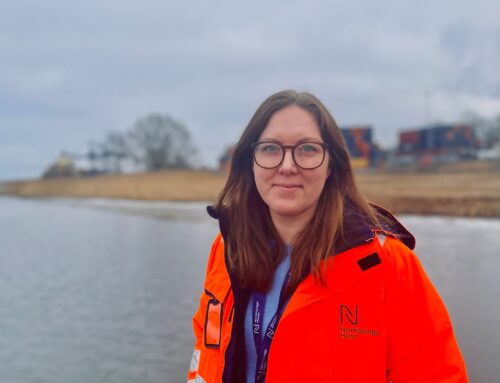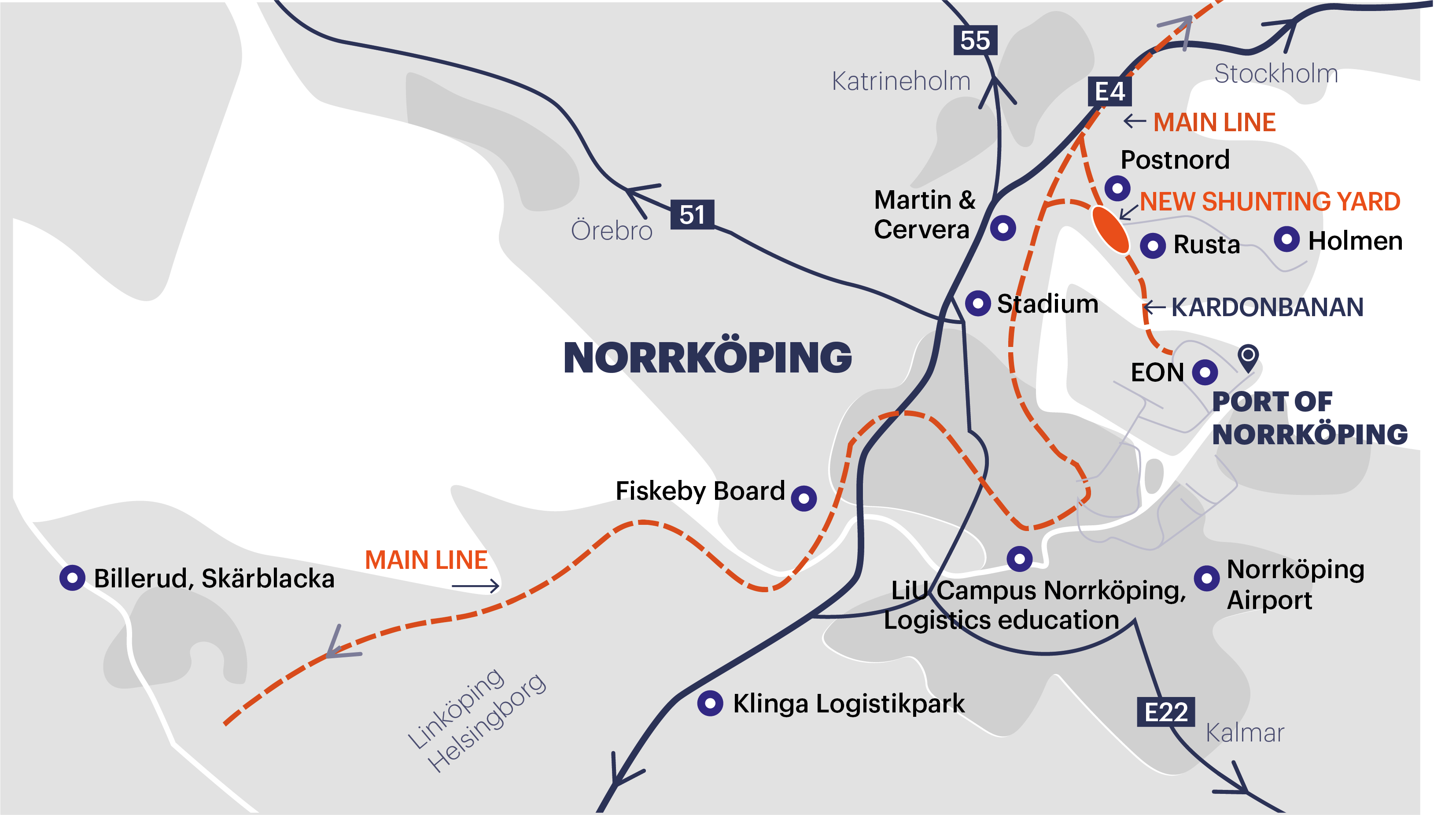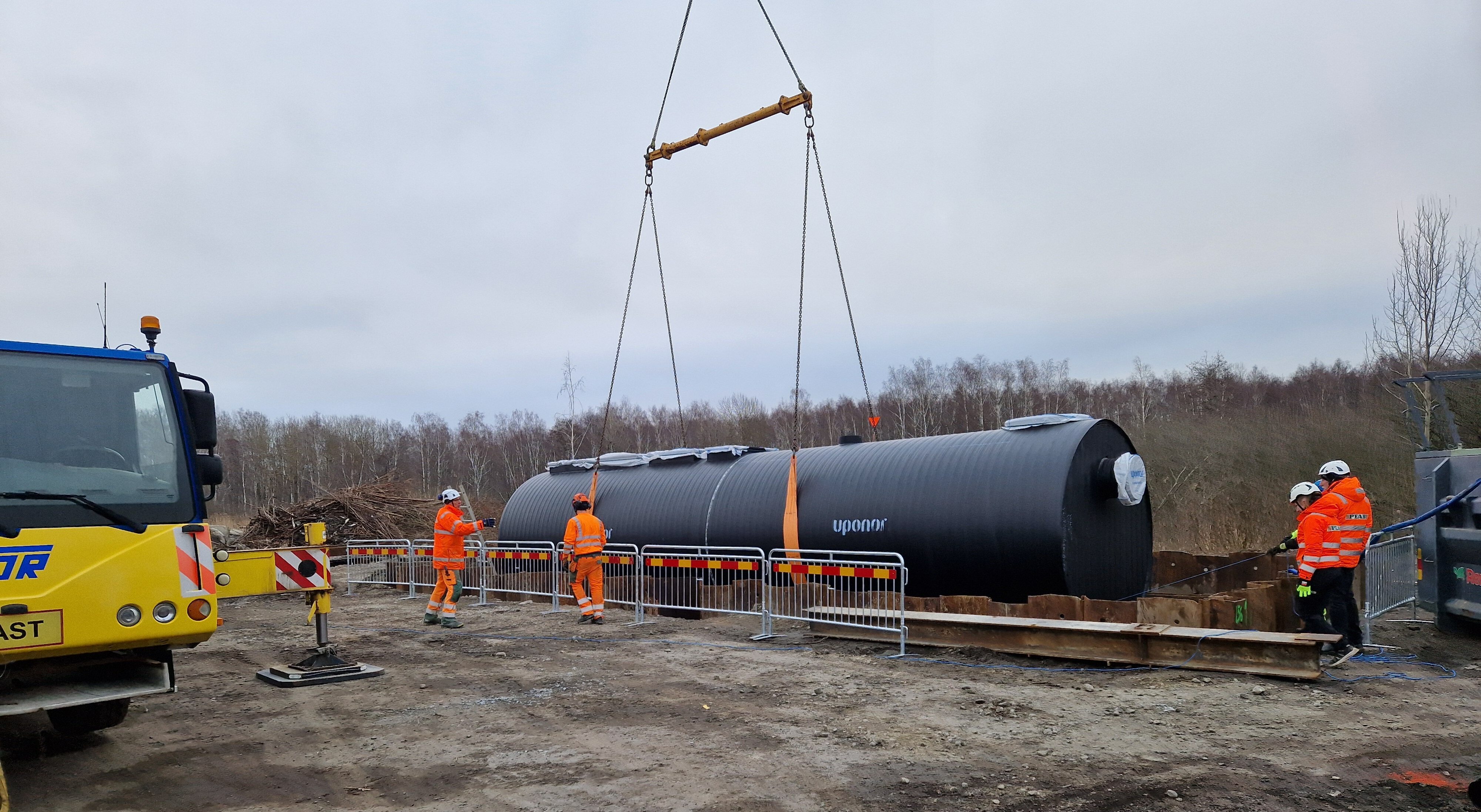
2024-10-01
We are currently working on installing a new facility for stormwater treatment at our Öhman terminal.
“Stormwater management is an important part of sustainability efforts for many industries and operations, and perhaps especially in ports where we have large paved areas. We use several different techniques to purify stormwater in our terminals,” says Daniel Andersson, Environmental & Quality Manager.
Stormwater management is not just an environmental issue, but also a matter of sustainable development
By treating stormwater and reducing the amount of pollutants that end up in our watercourses, we contribute to protecting our water resources, improving habitats for animals and plants, while ensuring that our operations comply with laws and regulations.
Stormwater management in a port differs from other industries due to the large, paved surfaces. Over 90% of rainwater flows into the stormwater system from these areas, which means that the treatment process must be both thorough and efficient to minimize environmental impact.
Treatment Methods in Our Facilities
“We use several different techniques to treat stormwater in our terminals,” says Daniel Andersson, Environmental & Quality Manager at Norrköping Port.
“In part of our port facility, we have created a larger pond where water can be stored to reduce flow and efficiently collect water. The pond promotes natural sedimentation through soil layers. This also happens through open ditches, where a natural purification process takes place – nutrients are absorbed by vegetation, and metals are trapped in sediment that can be dredged as needed.”
Stormwater Project at Öhman Terminal
“We are currently working on a large project at our Öhman Terminal. Here, we are installing an underground facility with a stormwater reservoir that treats an area of 10 hectares. The principle, which mimics nature’s own processes, cleanses water in three stages. Grates for coarse particles, a sedimentation stage where heavier particles settle to the bottom, and 14 filters that capture smaller particles and heavy metals. The reservoir allows water to be stored for a long period, enabling sedimentation.”
“The project is extensive, and we have installed three pump stations that pump a maximum of 150 liters of water per second to the reservoir, about 200 wells, and 585 meters of stormwater drains,” says project manager Daniel Andersson.
New Facility at Pampusterminalen
“At Pampusterminalen, we also have a new facility installed in conjunction with the construction of our new quay, P10. Here, we use oil separators in combination with heavy metal filters. This is a technology that effectively separates oil residues and heavy metals from stormwater,” Daniel continues.
Challenges and Successes
“A significant part of our stormwater management focuses on controlling oil products and metals in the stormwater. At our Energy Port, for example, water quality is measured once a month to monitor the levels of aliphatic and aromatic substances, two types of oil pollutants, in our efforts to maintain purification at the highest level possible,” says Daniel.
Collaboration with Ports of Sweden
“It’s important for us to stay updated, and we regularly exchange experiences with other ports through the environmental network within Ports of Sweden,” Daniel concludes.

